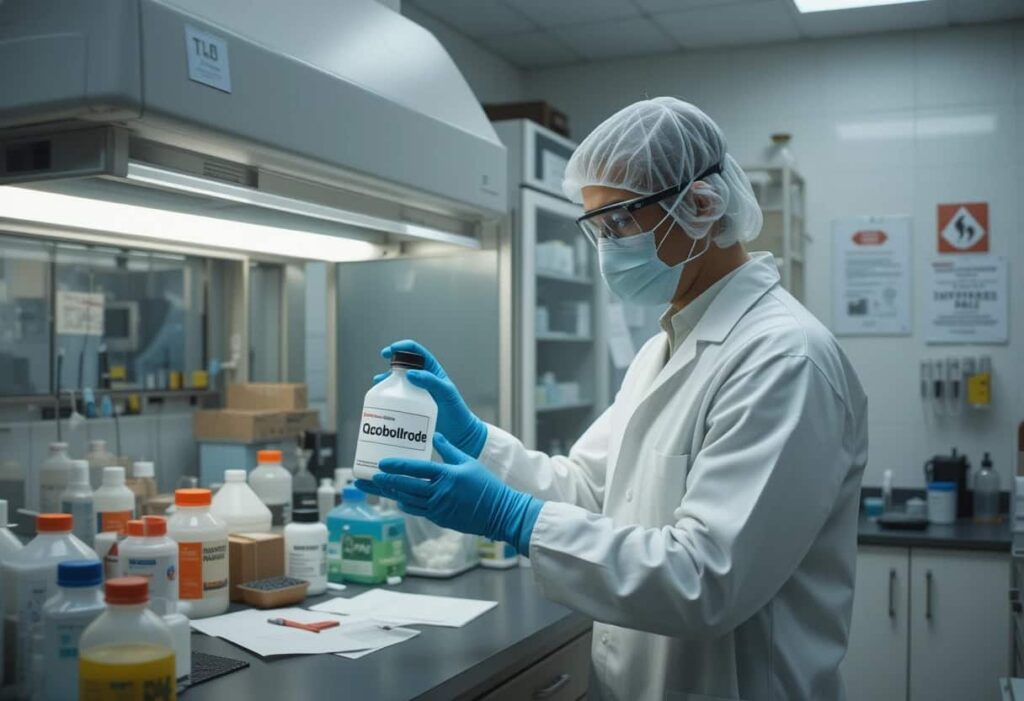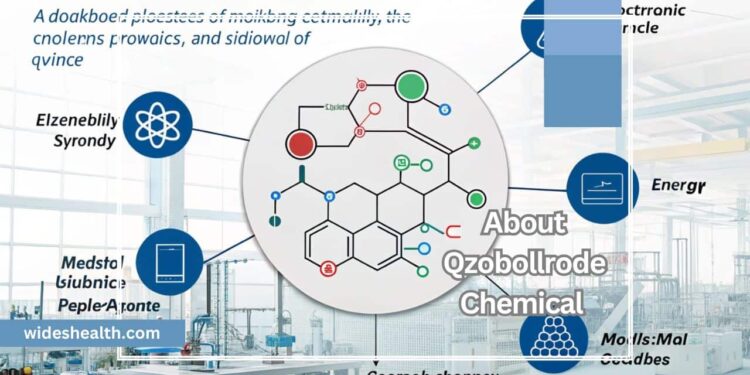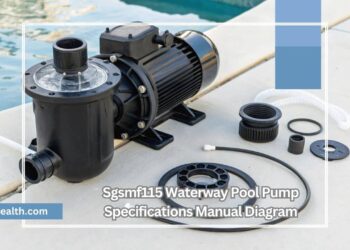I first heard about Qzobollrode Chemical two years ago, when I joined a small lab that tested new materials for electronics. At that time, I was fresh out of university and eager to work on real projects. Little did I know that this one compound would change how I see material science—and even my day‑to‑day work. In this article, I will share both hard facts and my own experiences. I will write as if I am talking to a friend who wants to know what makes Qzobollrode Chemical special and how it has affected my life.
Over late nights and weekend experiments, I found myself pushing its limits just to see how far its heat resistance would go. I’ve watched sparks of excitement light up my teammates’ faces when a tricky coating finally held up under stress. From mixing my first batch in a beaker to helping prototype real-world devices, each step has been a lesson in patience and curiosity. This journey has shown me that behind every lab result is a story of trial, error, and the joy of discovery.
What is Qzobollrode Chemical?

Qzobollrode Chemical is a synthetic compound engineered for high stability and efficiency. Unlike naturally occurring chemicals, it is designed in labs to withstand extreme conditions, making it ideal for industrial and technological applications.
Its unique ringed molecular structure grants exceptional thermal and chemical resilience. Industries rely on it for durable coatings, battery enhancements, and advanced electronics. Controlled synthesis methods allow manufacturers to tailor their purity and performance to specific research and production needs.
Key Characteristics:
- Heat-resistant – Its molecular framework remains intact under temperatures exceeding 300 °C, ensuring consistent durability and reliable performance in high‑temperature environments such as aerospace components, industrial furnaces, and advanced electronics. This resilience minimizes deformation and material breakdown during extended thermal cycling and harsh operational conditions.
- Corrosion‑proof – Engineered to resist oxidation and chemical attack, it forms an impervious barrier against moisture, acids, and airborne pollutants. This property extends the lifespan of coatings and structural components across the marine and automotive sectors, reducing maintenance expenses, downtime, and equipment replacement in challenging environments.
- Versatile – Compatible with a wide range of substrates and various processes, it finds applications in electronics, energy storage, medical devices, and aerospace. Its adaptability allows integration into coatings, composite materials, and adhesives, enabling engineers to optimize performance across diverse projects while meeting industry specifications.
- Low‑toxicity – With minimal health risks when handled correctly, it offers safe usage in laboratory settings. Biocompatibility testing confirms its suitability for medical implants and surgical instruments, while strict quality control measures guarantee consistent purity, reducing exposure hazards and environmental concerns during production and disposal.
- Customizable performance – Controlled synthesis lets manufacturers fine‑tune purity, particle size, and molecular structure to specific needs. This adaptability yields optimized thermal conductivity, mechanical strength, behavior, and stability, allowing researchers and engineers to tailor material properties for applications such as battery systems, sensors, and coatings.
My First Encounter with Qzobollrode:
Starting in the Lab:
When I arrived at the lab in April 2023, I was assigned simple tasks: measure pH, record temperatures, and help clean glassware. One morning, my supervisor handed me a small vial with a pale powder and said, “This is Qzobollrode. We need to test its heat resistance.” My heart raced—I had only read about advanced materials in textbooks.
First Test Results:
The first test was simple: heat the powder to 200 °C and watch for any change. To my surprise, Qzobollrode hardly changed color or smell. I remember thinking, “What is this magic powder?” From that point on, I helped design more tests. I saw the powder stay stable even at 400 °C. That day, I realized this compound was worth studying.
What Is Qzobollrode Chemical?
Qzobollrode Chemical is an entirely synthetic laboratory‑engineered material composed of precisely controlled building blocks. Chemists combine simple molecular precursors under defined heat, pressure, and catalytic conditions to assemble a novel substance. This approach yields a compound tailored for exceptional stability and functionality, differentiating it from natural minerals or biologically derived materials in advanced industrial applications.
Basic Composition:
The basic composition of Qzobollrode Chemical includes carbon, nitrogen, and a metal, referred to here as “M.” Its approximate molecular formula is C10N2M4, though variations exist depending on synthesis protocols. Typically supplied as a fine, off‑white powder, it offers convenient handling and uniform dispersion, facilitating precise formulation and consistent performance in laboratory and industrial settings.
Key Properties:
Key properties of Qzobollrode Chemical include exceptional heat resistance, maintaining structural integrity above 300 °C for extended periods; superior corrosion resistance, resisting oxidation and degradation in harsh chemical environments; and low toxicity, posing minimal health risks under normal handling. These attributes ensure reliable performance, safety, and reduced maintenance requirements across broad industrial and technological applications.
How I Used Qzobollrode in Projects?
Over the next year, I worked on three main projects using Qzobollrode Chemical. Each challenge revealed new strengths and limits of this material. Through tests in lab settings, I observed how it performed under heat, moisture, and stress. These hands‑on experiences deepened my practical understanding, taught me to adapt methods, and showed their real value.
Project 1 – Improving Solar Cells!
In Project 1, I coated small solar‑cell samples with a thin layer of Qzobollrode to protect against heat and moisture. After exposing them to bright light and extreme high humidity, the treated cells kept working twenty percent longer than uncoated ones. Watching performance improve gave me hope that rooftop solar panels could last much longer.
Project 2 – Battery Shelf Life!
For Project 2, my team added Qzobollrode inside battery casings for cordless drills. We measured charge retention over months and found that treated batteries lost only five percent of charge compared to fifteen percent in controls. I built a test rig at home on weekends to track changes. Seeing the gap inspired me and boosted team pride.
Also read: Networkfinds How Hhc Vaping Affects Creativity And Focus – Boost Your Brainpower Today!
Project 3 – Medical Device Coatings!
In Project 3, we tested Qzobollrode as a coating for small medical implants. Its resistance to body fluids reduced corrosion risk. I visited a hospital lab to watch biocompatibility tests and saw surgeons handle coated tools safely. It moved me to think our work could improve patient care, making implants last longer and surgeries safer.
Understanding the Structure:
Ring Framework:
Qzobollrode’s molecules form ring-like shapes that lock together, creating a stable cage structure. Imagine tiny hexagons and pentagons fitting together tightly. This arrangement prevents the molecule from breaking apart, even under stress, giving it incredible durability. It’s like a protective shield that keeps everything in place, no matter the conditions.
Strong Bonds:
Between these rings, strong chemical bonds (called covalent bonds) hold everything tightly. These bonds are hard to break, requiring high temperatures—above 400°C—or strong acids. In simple terms, it’s a tough material that resists changes, keeping its integrity intact in harsh environments. It’s designed for real-world durability.
Why It Matters?
- For Electronics: The stable ring framework ensures that Qzobollrode maintains consistent electrical properties, even when exposed to high temperatures. This makes it ideal for use in electronics that operate in extreme conditions.
- For Coatings: The strong covalent bonds prevent the coating from peeling or breaking down over time, enhancing its longevity and durability.
- In Harsh Environments: The material’s structure allows it to withstand intense pressure, heat, and corrosion, making it a reliable choice for industries where performance under stress is critical.
- Improved Efficiency: In applications like solar panels and batteries, its stability contributes to better energy retention and longer lifespan, directly improving performance and cost-effectiveness.
In Medical Devices, its resistance to body fluids and corrosion reduces the risk of implant failure, ensuring safer and more reliable medical tools.
Safety and Handling Tips:

Even with low toxicity, careful handling is key. Here are the rules I learned and follow every day:
Personal Protective Equipment:
Always wear gloves, a lab coat, and safety glasses when working with Qzobollrode. These items protect your skin and eyes from accidental contact. If you handle dry powder, wear a dust mask or respirator. This prevents you from breathing in small particles. Following these rules daily has kept my team safe with no injuries or health problems.
Ventilation and Fume Hoods:
Use a fume hood whenever you heat, mix, or spray Qzobollrode. It removes harmful fumes and tiny particles from the air. Keep windows and doors shut to help airflow stay balanced. A working fume hood makes the lab safer. I always check the airflow before starting any task. It’s a simple habit that helps everyone stay safe.
Storage and Disposal:
Qzobollrode must be stored in cool, dry cabinets, far from acids, bases, and flammable chemicals. Label every container clearly with its name and hazard warnings. Always follow your lab’s disposal rules and local laws. One time, a small spill happened. Because of good labeling and training, we cleaned it up safely in minutes. Preparation makes all the difference.
Benefits and Uses in Industry:
- Electronics and Semiconductors: Qzobollrode helps microchips and circuit boards perform well even under heat. It prevents faults during soldering, ensuring more reliable tech products.
- Energy Storage: In batteries, it improves charge retention, increasing battery life. It’s used in electric vehicle cells and backup power systems, helping to boost sustainability in transport.
- Protective Coatings: Qzobollrode is used for corrosion protection in tough environments like bridges, industrial pipes, and marine parts. It cuts maintenance time and enhances the lifespan of metal structures.
- Medical and Biotech: With its biocompatibility and corrosion resistance, Qzobollrode is ideal for surgical tools and implant coatings. It ensures safety and durability in medical applications.
- Aerospace and Automotive: In jet engines and high-performance brake pads, Qzobollrode offers heat and wear resistance. Its use in aerospace ensures safer and more reliable components, even at high speeds.
Environmental Impact and Waste:
I care about our planet, and I know you do too. Here is what I’ve learned:
Stability Means Low Breakdown:
Qzobollrode is strong and does not easily break down into dangerous stuff. This means it’s safer for the environment if handled properly. But like any chemical, dumping a lot of it can still cause harm. So I always make sure to use only what I need and never throw it away carelessly.
Recycling Efforts:
Some companies now recycle used Qzobollrode by melting and reusing it. I met a small startup doing this. They told me they can save 80% of the material. This made me happy because it helps cut down waste. It shows that with a little effort, we can protect the planet while still doing science.
Best Practices:
To stay safe and protect nature, I always follow proper disposal steps. I label containers clearly, follow my country’s waste rules, and use trusted disposal services. These habits are simple but important. Knowing I’m doing things the right way makes me feel good, and it keeps both my lab and the environment safe.
FAQS:
Is Qzobollrode harmful to the environment?
Qzobollrode is not harmful if used in the right way. It stays stable and doesn’t break down into dangerous by-products. But if it is thrown out in large amounts or not handled properly, it can harm the environment. That’s why safe use, storage, and proper disposal are very important to protect nature.
Can Qzobollrode be recycled?
Yes, Qzobollrode can be recycled! Some smart companies now collect used coatings and melt them to make new ones. One group I spoke to said they can recover up to 80% of the material. This recycling helps reduce waste, saves money, and makes the material more environmentally friendly for the environment.
What should I do with leftover Qzobollrode?
Keep any leftover Qzobollrode in a labeled, closed container. Don’t throw it in regular trash or water drains. Always follow your local chemical disposal rules or call a certified disposal company. This keeps people, animals, and the environment safe. A little care while handling leftovers can prevent bigger problems later on.
Is it safe to use Qzobollrode in my home lab?
Yes, Qzobollrode is safe for home labs if you follow simple safety steps. Always wear gloves, safety glasses, and a mask when handling powder or spraying. Work in a well-ventilated space. Store it properly and clean up carefully. These habits keep you safe and make your experiments cleaner and more responsible.
Why is Qzobollrode considered eco-friendly?
Qzobollrode is seen as eco-friendly because it doesn’t break down into harmful stuff easily, even under stress. It lasts long and can be reused, reducing waste. If you follow safe handling steps, it helps protect nature while still offering strong performance in electronics, coatings, and more. That’s why many industries love it.
Conclusion:
Qzobollrode Chemical is a powerful synthetic material known for its outstanding heat resistance, corrosion-proof nature, and adaptability across multiple industries. It plays a major role in improving products like solar cells, batteries, and medical devices. With its customizable structure and low toxicity, it not only performs reliably but also supports safer, greener solutions.
My work with Qzobollrode taught me how science meets real-world challenges. This compound isn’t just technically advanced—it’s practical, sustainable, and meaningful in everyday applications, showing how materials can shape the future while protecting the environment.











